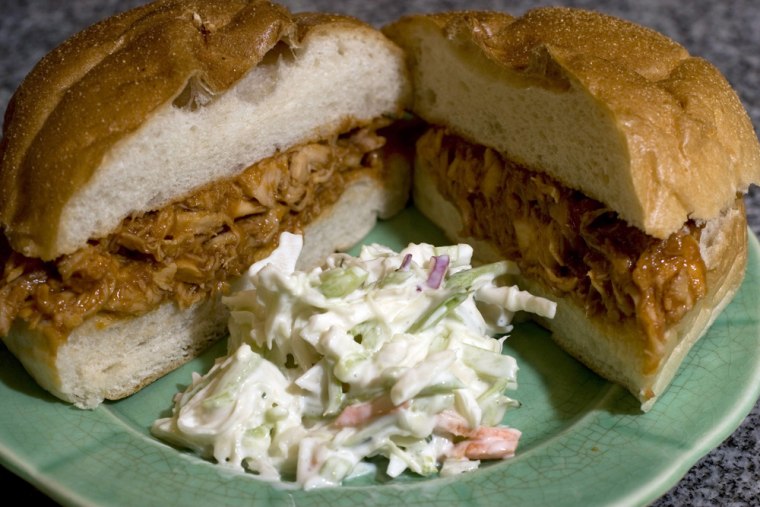Can we split that?
The question — once considered a bit gauche in some circles — is now being asked by diners of all kinds at restaurants in every price range. With the economy still souring, splitting an appetizer, dessert and even an entree is becoming, for many, an easy way to save a few dollars without sacrificing the indulgence of a dinner out.
"My husband and I try to either split dishes or use a 'buy 1, get 1' coupon every time we go out nowadays," said Jessica Secord of Grand Rapids, Mich., adding that they usually split an entree and other items. "We don't always order dessert or appetizers, but when we do you can guarantee that it's shared."
Restaurants say they are seeing more and more customers like Secord who are using the tactic to slice their eating-out budget.
"People are splitting things like they never have before," said David Pogrebin, general manager of French restaurant Brasserie in New York, where a hamburger costs $18 and an entree can rise above $30.
Pogrebin said he recently noticed three people sharing an iced tea, which comes with unlimited refills. The restaurant didn't stop them.
"Now all bets are off," he said. "People are not ashamed of being frugal."
Thriftiness hasn't always been met with a smile at restaurants. Most diners who have ever asked to split an entree know well the withering look from a server that brands them a penny-pincher.
But in these days of high unemployment and shrinking paychecks, many consumers just don't see being frugal as such a crime.
"I do worry sometimes about people thinking we are being cheap, but I tend to feel that I am still spending money there over eating at home, and I try not to worry about it," said Marcy Robison, a stay-at-home mom from Columbus, Ohio. "In the end, we are trying to be wise stewards of our finances and if someone finds fault with that, so be it."
Robison, who also writes a blog called "Stretching a Buck," said she and her husband typically eat out two or three times a week and frequently split an entree or order two entrees and split them with their 3-year old daughter.
She said that by sharing dishes, the family saves between $5 and $12 each time, depending on where they go.
Of course, the savings can dwindle at restaurants that charge a splitting fee, which can go as high as $5 for an entree.
Some restaurants assess the fee if the chef splits the dinner into two before bringing it to the table. Some dishes aren't easily splittable — pork in bone, for example, can't be cut exactly in half without one person receiving more fat or more bone.
But the hassle may be worth it if it brings more diners to the table. Restaurants have been hard hit by the recession as more consumers cut back or eat at home to save money.
According to industry data service Knapp-Track, which collects monthly sales data from more than 10,000 sit-down restaurants, same-store sales — or sales at stores open at least a year — for sit-down chains dropped an estimated 4.1 percent in January from the same month a year earlier.
For those restaurants and servers willing to accommodate diners asking for halfsies on an entree, some customers may offer at least a small reward — a bigger tip.
"Sometimes I do feel slightly cheap, but we always make sure to tip our waitress as if we purchased two meals," said Kristine Lewis, a student at Brigham Young University in Provo, Utah. "In fact, if a waitress doesn't make us feel as if we are doing something wrong, we usually feel more generous with the tip."
